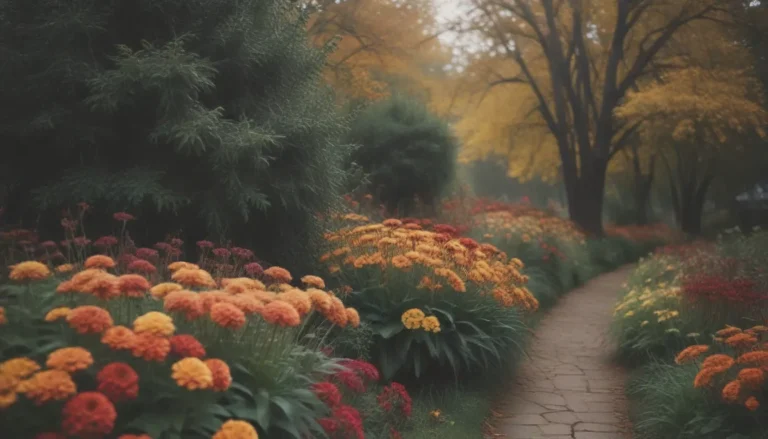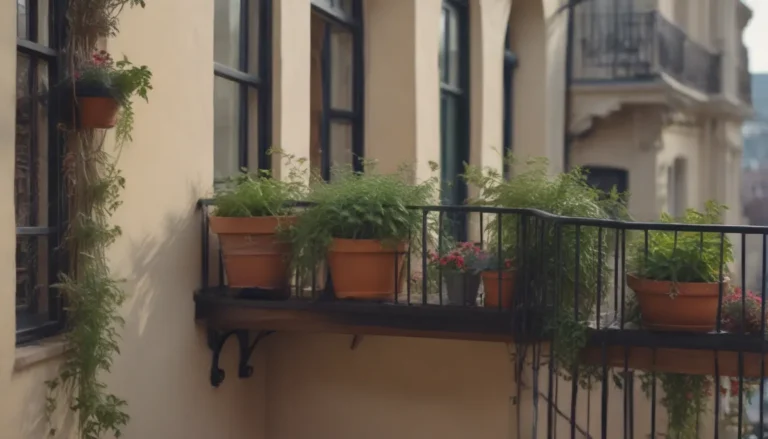Comprehensive Guide: How to Successfully Grow and Care for Persian Buttercups

Are you looking to add a pop of color and elegance to your garden or home with Persian buttercups? These stunning flowers are known for their ruffled petals, vibrant colors, and long vase life. In this comprehensive guide, we will walk you through everything you need to know to successfully grow and care for Persian buttercups.
Persian Buttercup Overview
Before we dive into the detailed care instructions, let’s take a moment to appreciate the beauty of Persian buttercups. Here are some key points to keep in mind about these gorgeous flowers:
- Beloved for their brilliantly colored and ruffled petals
- Grow best in sunny flower beds with at least six hours of daily sunlight
- Prefer sandy, well-draining soil and temperatures below 90 degrees Fahrenheit
- Toxic to humans and animals
Now that we have a basic understanding of Persian buttercups let’s move on to the essential care requirements to help these flowers thrive.
Persian Buttercup Care
Here are the main care requirements for growing Persian buttercups:
Light
- Persian buttercups prefer full sun (at least six hours of sunlight daily) to grow and bloom best
Soil
- Grow in sandy or loamy soil with good drainage and slightly acidic pH
- Amend heavy soil with compost or plant in raised garden beds
- Avoid overwatering to prevent rot
Water
- Water well upon planting, then withhold water until growth appears
- Once established, prefer moderately moist soil, water when soil begins to dry out
Temperature and Humidity
- Prefer cool spring weather, go dormant once temperatures exceed 90 degrees Fahrenheit
- Mulch around plants to keep roots cool and extend growing period
- High humidity can cause bulbs to rot, avoid excessively humid conditions
Fertilizer
- Mix compost or bulb fertilizer into soil before planting
- If growing in a container, fertilize biweekly with water-soluble fertilizer
By following these care requirements, you can ensure that your Persian buttercups will thrive and produce beautiful blooms.
Types of Persian Buttercup
There are multiple varieties of Persian buttercups with varying appearances to choose from:
- Ranunculus asiaticus ‘Tecolote Red’
- Ranunculus asiaticus ‘Bloomingdale’
- Ranunculus asiaticus ‘Café’
- Ranunculus asiaticus ‘Flamenco’
- Ranunculus asiaticus ‘Merlot’
Each variety offers unique colors and characteristics, allowing you to create a diverse and stunning garden display.
Pruning and Propagation
Pruning
- Trim foliage indoors to maintain shape and size
- Deadhead flowers as they fade for more blooms
- Allow outdoor plants to die back naturally after blooming
Propagation
- Easily propagate through division or seed
- Division replicates parent plant, while seeds offer variety (note: hybrid seeds may not breed true)
How to Grow Persian Buttercups From Seed
With Persian buttercups, you can also propagate by collecting seeds. Here’s a brief guide on how to grow from seed:
- Cut fading flowers from plant
- Collect seeds and sow in well-draining soil
- Follow watering and care instructions for optimal growth
Potting and Overwintering
Potting
- Grow in containers with ample drainage holes
- Use all-purpose potting mix and space corms apart for best results
Overwintering
- Cut back to ground in hardiness zones or bring indoors
- Store corms in a dry, cool place for harsher winters
By following these steps, you can enjoy beautiful Persian buttercups year after year.
Common Pests and Plant Diseases
Persian buttercups may attract pests like spider mites, aphids, and leaf miners. To combat these pests, try the following:
- Spray with water and mild soap solution for aphids
- Use organic pesticides for spider mites and leaf miners
Diseases like powdery mildew and necrotic spot can also affect Persian buttercups, so be vigilant in monitoring your plants for signs of distress.
Tips for Blooming Success
- Bloom months vary by climate, typically starting in March in warmer regions
- Flowers have a vase life of 7-10 days or more
- Encourage more blooms with proper watering and minimal fertilizer
- Deadhead flowers for additional blooming cycles
Following these tips will help you maximize the beauty and longevity of your Persian buttercups.
Common Problems and Solutions
While Persian buttercups are relatively low-maintenance, there are a few common issues to watch out for:
- Curled, yellow leaves may indicate various problems
- Prevention is key: provide proper air circulation, water soil, not plants, and rotate plantings
With proper care and attention, Persian buttercups can live for up to 10 years, making them a rewarding addition to any garden.
In conclusion, growing and caring for Persian buttercups can be a rewarding experience. By following the guidelines outlined in this comprehensive guide, you can enjoy the beauty of these vibrant flowers in your garden or home for years to come. So, roll up your sleeves, get your gardening gloves on, and watch your Persian buttercups bloom and thrive!





